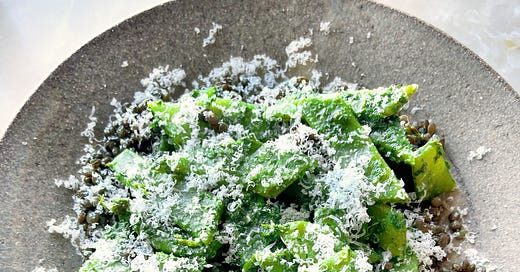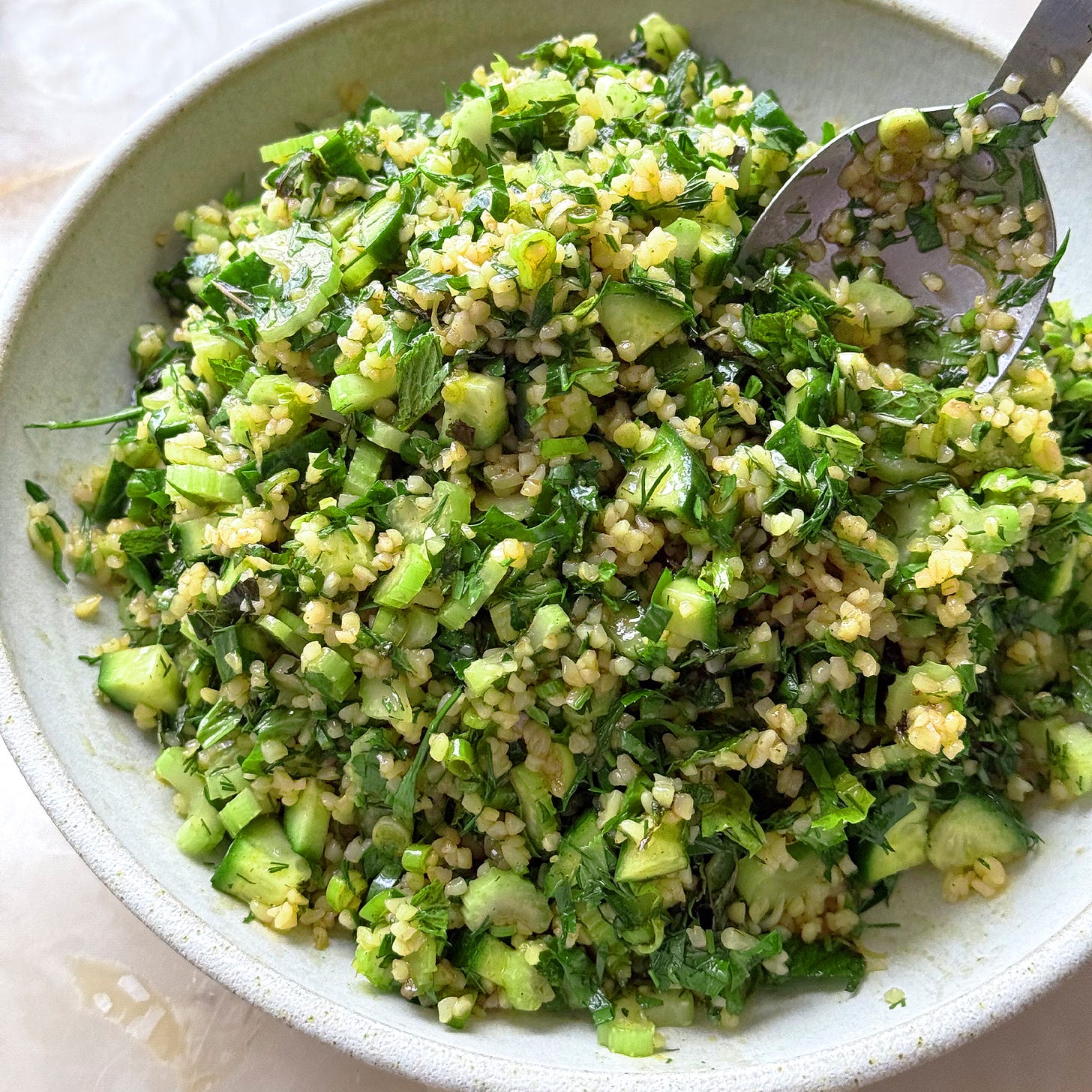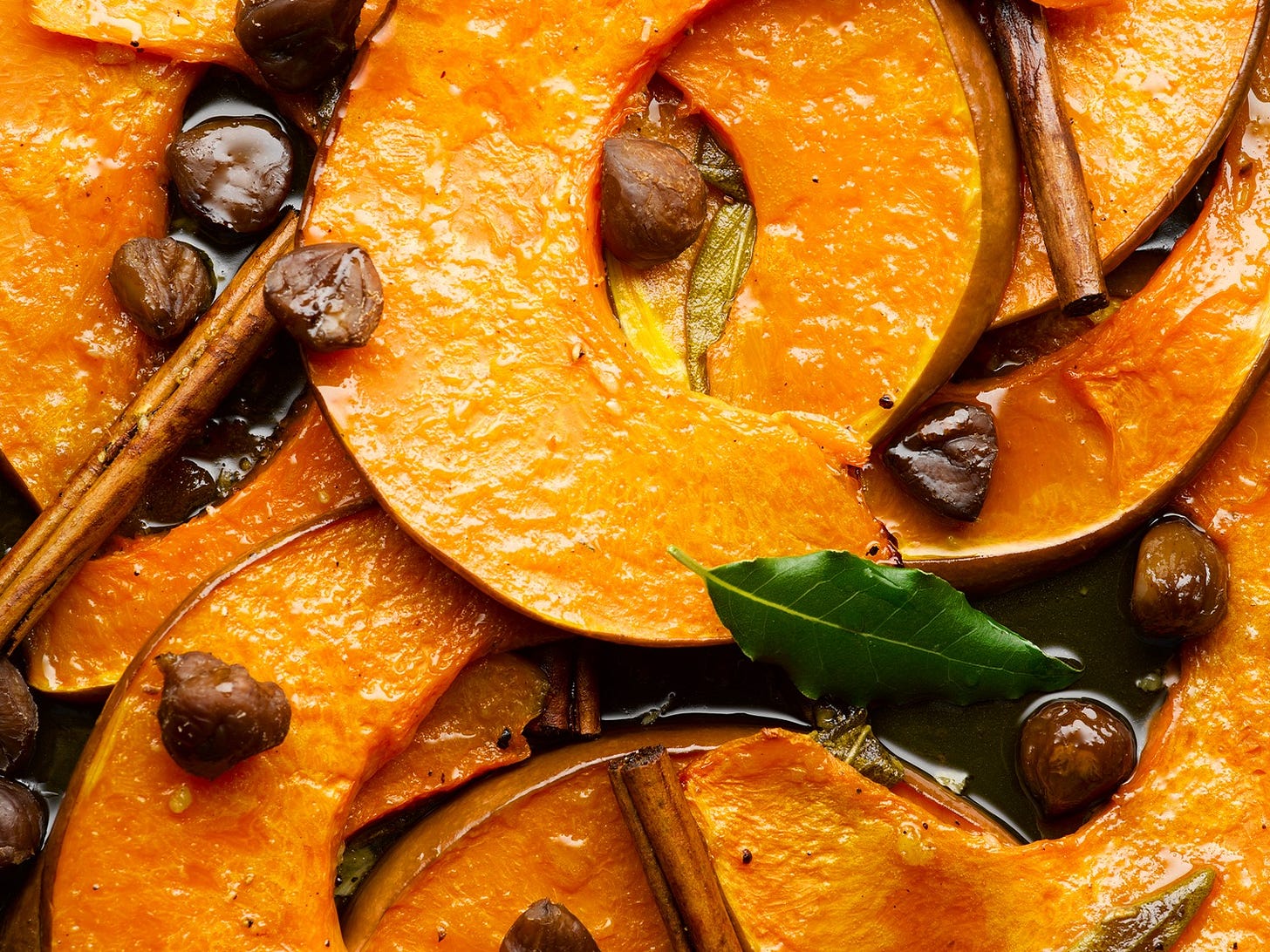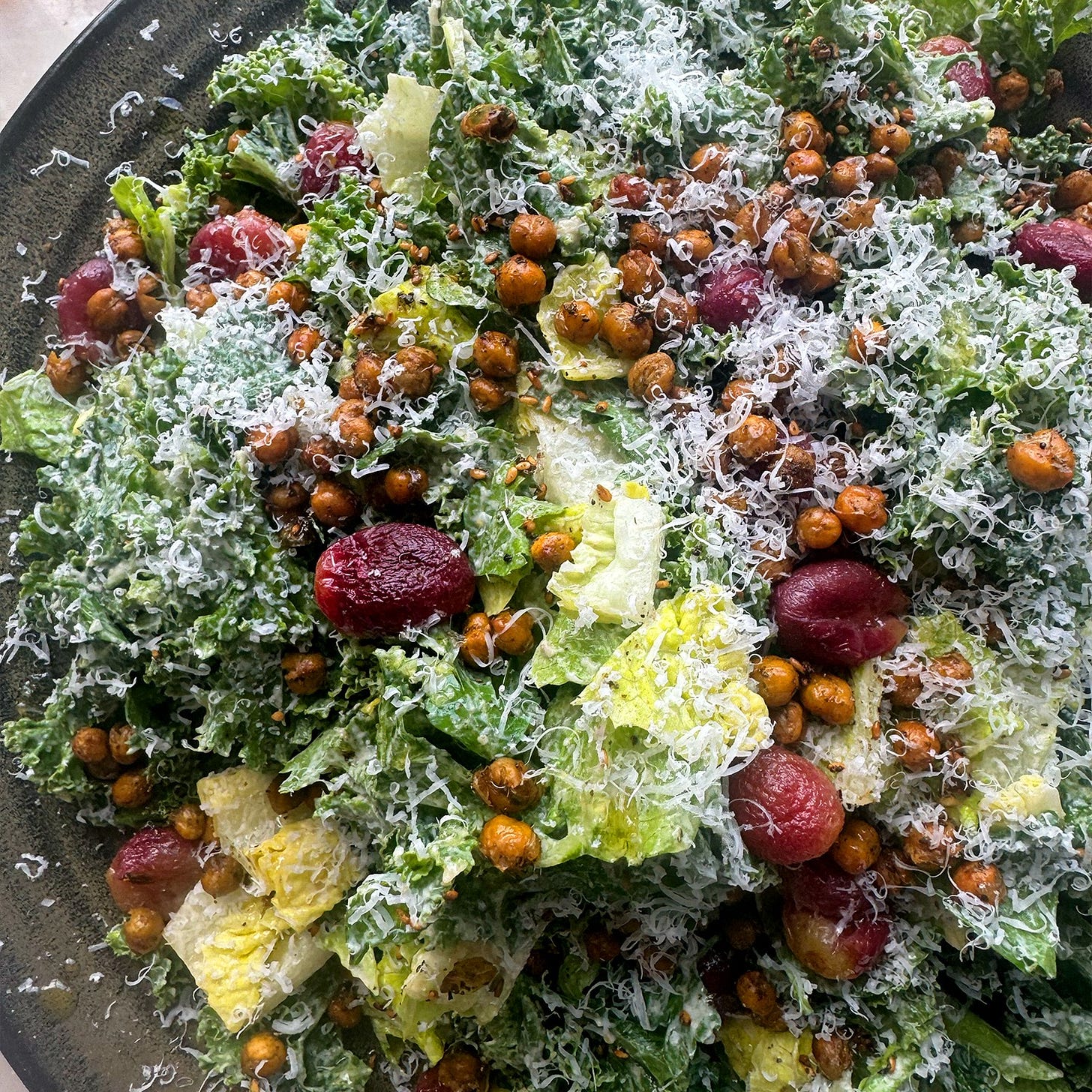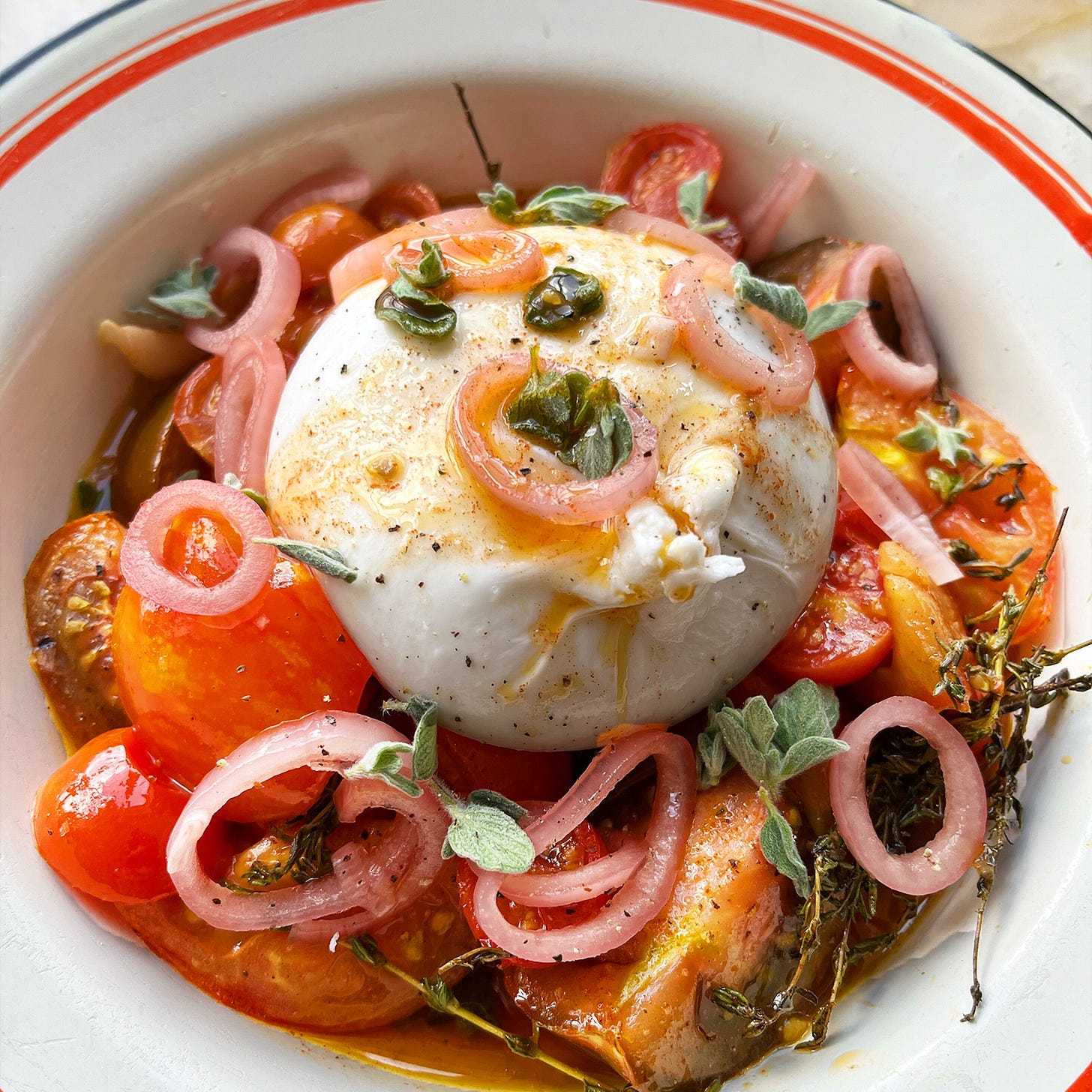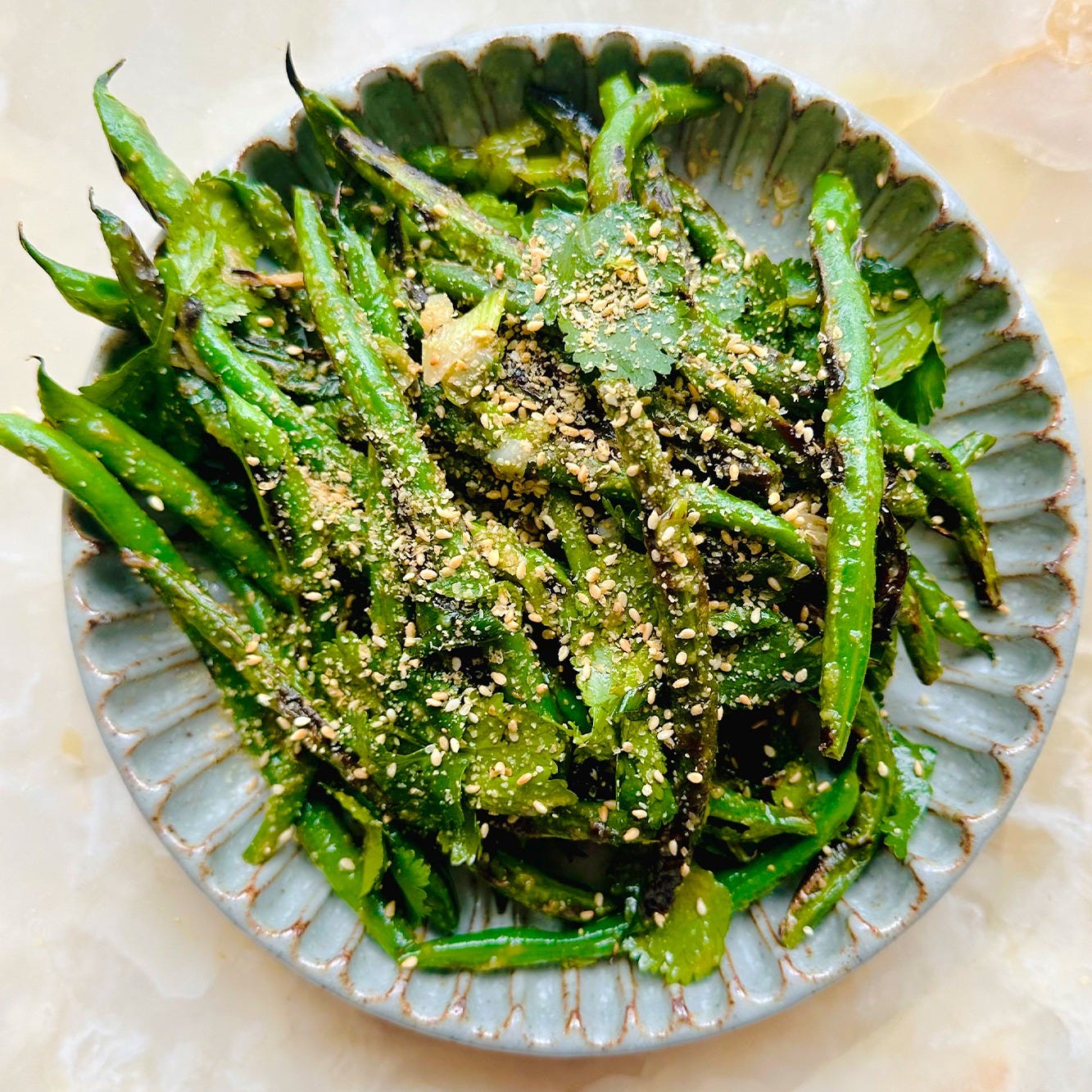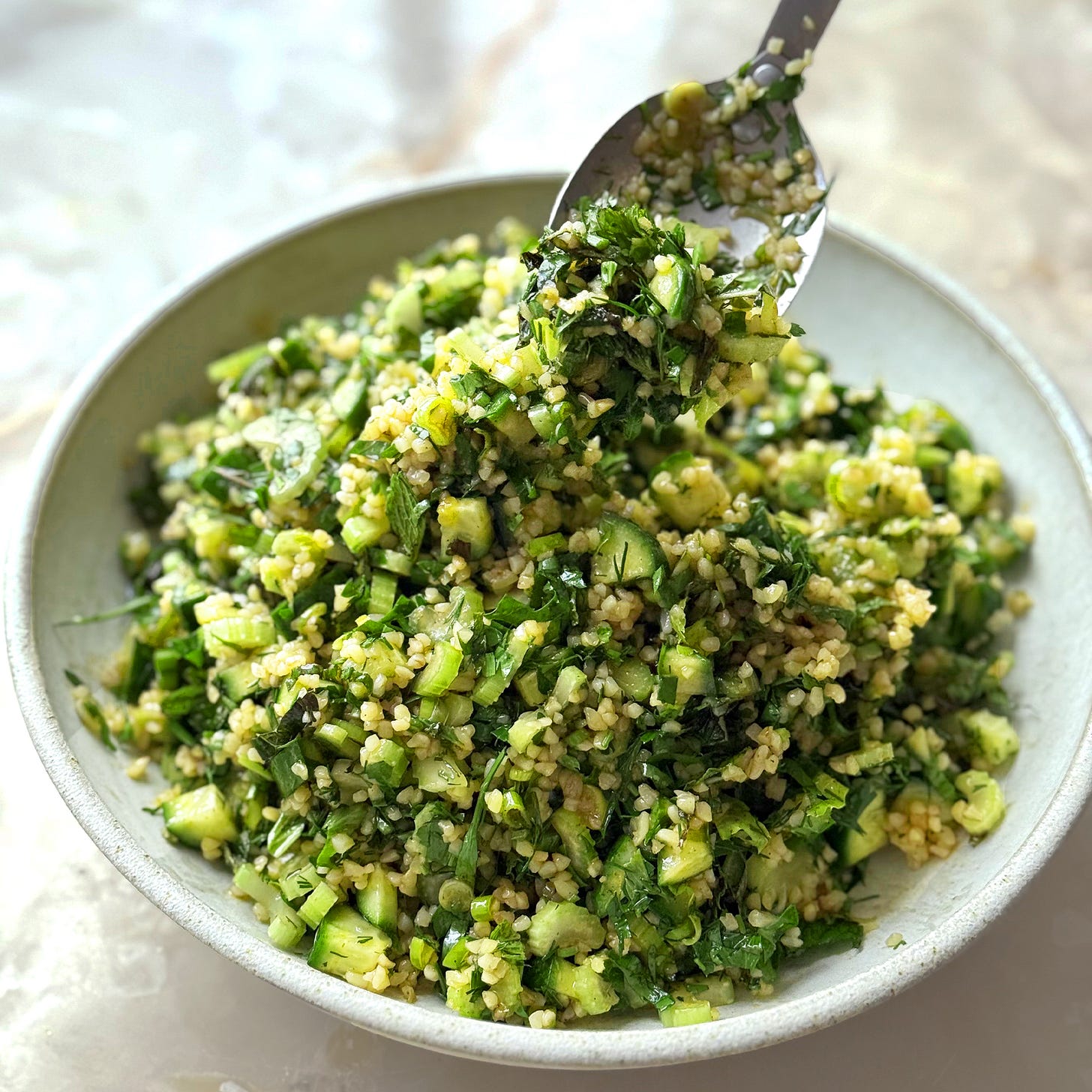What makes an Ottolenghi salad? Part 2
Contrasts, layers, and how I approach the perfect forkful
I've been listening to too many podcasts.
I've become one of those annoying people with permanent earbuds, nodding along to conversations I'm not actually part of. Last week was David Olusoga’s discussion on female pirates (so interesting) and Loyle Carner’s moving conversation with Adam Buxton about his children (made me cry!).
This week, halfway through an episode of The Rest is History, food historian John Dickie spoke about how medieval Venetians would write recipes through ancient humoral theory. Just as your body was kept healthy by balancing the humors, a similar balance was found in food. They believed every ingredient had its own 'temperature' - not actual heat, but this mystical classification where spices were 'warm' and beneficial, while 'cold, wet' foods posed dangers to your health.
Soggy winter vegetables are potentially lethal without the right spice to counterbalance. Your humoral equilibrium hangs in the balance!
It sounds a little mad, but as he explained it, I found myself nodding with agreement. I've always felt certain flavours belong together. Warm spices like cinnamon and cardamom for roasted vegetables (particularly if they are orange and sweet), not so much raw salads. Cold cucumber naturally wants mint and lemon, it feels wrong with cumin or paprika (although I can immediately think of a million exceptions to the rule). It’s paying attention to what actually works - intuitive combinations of flavour, all wrapped up in the best explanation they had at the time.
Which brings me to Part 2 of What makes an Ottolenghi salad?
Last time, I spoke about choosing your hero ingredient - letting one ingredient take charge while everything else falls into supporting roles. This week is construction week.
Those medieval Venetians weren't being mystical, really. They were just talking about contrasts and layers.
I’m drawn back to Max Halley's sandwich theory. He believes you should balance six elements in every sandwich: hot, cold, sweet, sour, crunchy, soft. The principle is sound - contrast creates interest, and interest keeps you engaged with your food rather than just mindlessly forking through it.
I have my own contrast (slightly looser) checklist:
Sweet against salty - the salt makes the sweetness sing louder (especially sweet with cheese, like peach with goat’s cheese, or Medjool dates stuffed with blue cheese).
Soft against crunchy - tender lentils with toasted nuts, creamy yoghurt with crisp seeds, ripe avocado with dukkah.
Warm against cool - cold yoghurt spooned over something that's just come blazing out of the oven, or room-temperature grains with vegetables still warm from roasting.
Bright against rich - a squeeze of lemon over slow-cooked vegetables, fresh herbs cutting through heavy cream, pickled onions alongside anything involving tahini.
Contrasting colours - different hues of green, one against another; or the bright green of a cucumber contrasting the bold red of tomato; the mustardy yellow of turmeric oil drizzled over pristine white yoghurt - we eat with our eyes and all these visual contrasts - big or small - are translated into flavour.
Not every salad needs all of these - that would be exhausting. But it's a useful way to think when you're staring at ingredients and wondering what goes with what.
The vegetable & umami imperative.
There's one thing I insist on: vegetable salads need umami - something deeply savoury that makes it satisfying. This is where I reach for cheese, or a splash of soy sauce, or some really good tomatoes.
Maybe some miso in the dressing, or black garlic cloves. Fish sauce works brilliantly too. Or something fermented - quick pickles that bring sharp, tangy bite, maybe preserved lemons that add complexity.
The point is: every salad needs something that makes you lean forward, something to anchor it, rather than just dutifully eating your vegetables.
Building layers…
I love building salads in layers - sturdy grains or roasted vegetables forming the foundation, lighter elements scattered on top, final flourishes of herbs or nuts (like the Tamarind & black chickpea salad below).
This isn't being precious about presentation (though I suppose I am that too). Different layers mean different bites and sensations - some forkfuls will be all creamy yoghurt and soft aubergine, others will give you the full journey from bottom to top.
I'll explore this more next week - the final part of my salad trilogy is about generosity and how to make your salads look as good as they taste (as I say, we eat with our eyes too!!).
The salads I'm sharing today, however, focus on grains and pulses - ingredients that can blur into beige uniformity if you're not paying attention. Both use contrast to wake them up in different ways.
Tabbouleh with extra greens and pomegranate molasses
This tabbouleh has greens added to the herbs - cucumber and celery - which makes it particularly crunchy. It's fresh and uses baharat to add warmth against all those bright herbs. The pomegranate molasses is doing most of the heavy lifting here, providing that sweet-sharp contrast that makes everything else sing louder.
It's the kind of salad that works beautifully as part of a summer spread - alongside dips and smooshes and whatever vegetables I can grill - or on its own with some warm flatbread torn into pieces for scooping. I've served something very similar with grilled lamb countless times, though I have to confess I'm just as happy eating it straight from the bowl, standing by the fridge.
Beyond the wall: a layered lentil salad with green beans and parmesan, plus the herb oil I put on everything.


